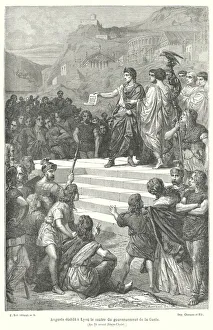Lugdunum Collection
Lugdunum: A Beacon of Roman Civilization in Gaul From its humble beginnings as an administrative center established by Emperor Augustus in the 1st Century BC, Lugdunum
All Professionally Made to Order for Quick Shipping
Lugdunum: A Beacon of Roman Civilization in Gaul From its humble beginnings as an administrative center established by Emperor Augustus in the 1st Century BC, Lugdunum, now Lyon, flourished into a vibrant Roman city. The people of Gaul honored Augustus with a grand temple, while the Lyon Tablet, a bronze decree from 48 AD, showcases the city's importance. In the 4th Century, Lyon continued to thrive, as evidenced by the impressive architecture and art, including the Temple of Augustus and the Fourvière hill overlooking the city. The Lyon Tablet, a testament to the city's Roman heritage, was discovered during this period. Looking back to the city's origins, Augustus presented the constitution to the deputies of the three provinces of Roman Gaul at Lugdunum in 10 BC. Fast forward to the 16th Century, and Lyon was a bustling city, as depicted in the engraving 'Fourvière from St. Antoine Quay.' Throughout history, Lyon has been a melting pot of cultures, from the ancient Romans to the Greeks, as seen in the works of Aristophanes and the writings of St. Irenaeus. The city's rich history continues to inspire and captivate, making it a must-visit destination for history buffs and travelers alike.










